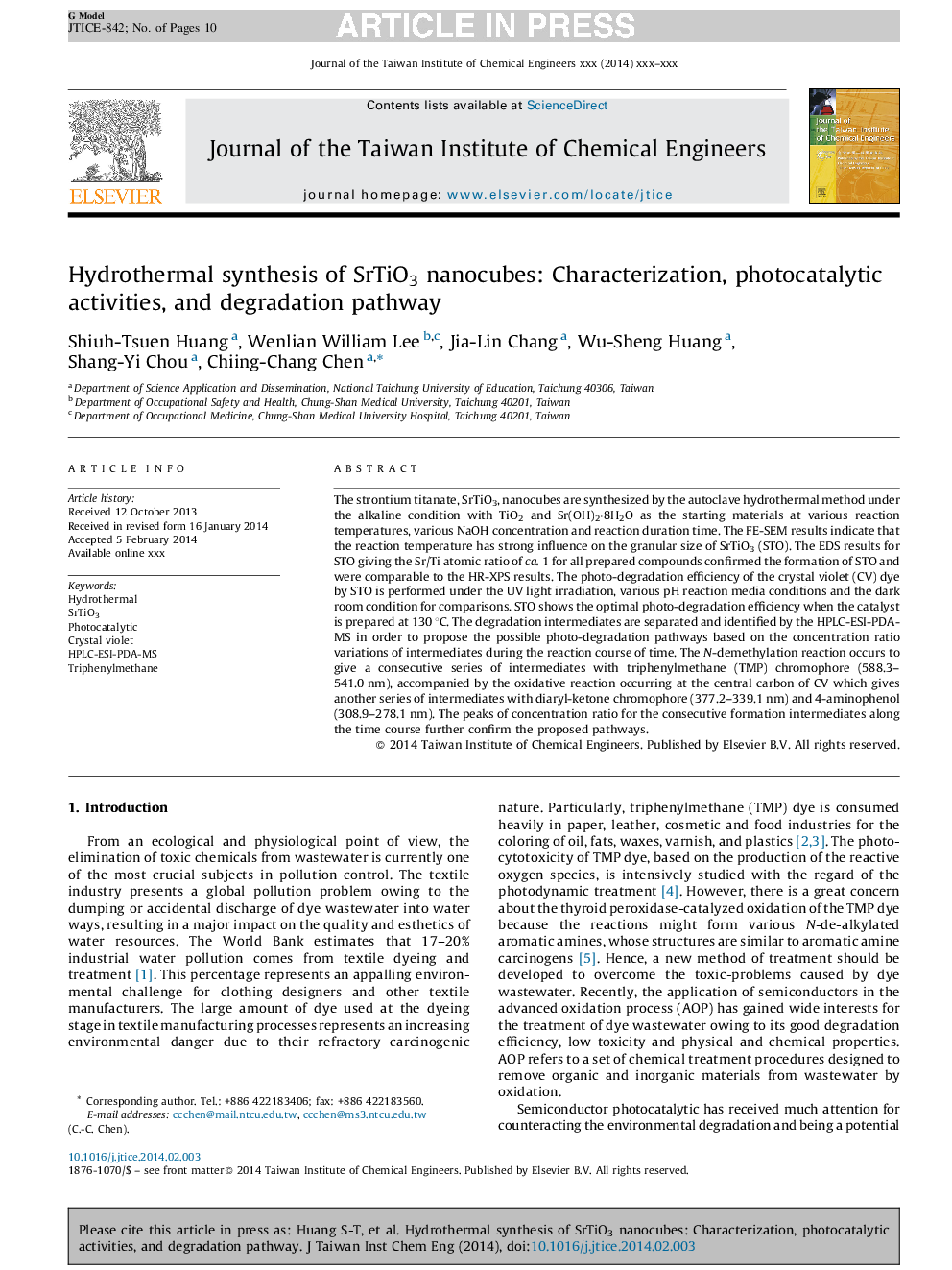| Article ID | Journal | Published Year | Pages | File Type |
|---|---|---|---|---|
| 690957 | Journal of the Taiwan Institute of Chemical Engineers | 2014 | 10 Pages |
Abstract
The strontium titanate, SrTiO3, nanocubes are synthesized by the autoclave hydrothermal method under the alkaline condition with TiO2 and Sr(OH)2·8H2O as the starting materials at various reaction temperatures, various NaOH concentration and reaction duration time. The FE-SEM results indicate that the reaction temperature has strong influence on the granular size of SrTiO3 (STO). The EDS results for STO giving the Sr/Ti atomic ratio of ca. 1 for all prepared compounds confirmed the formation of STO and were comparable to the HR-XPS results. The photo-degradation efficiency of the crystal violet (CV) dye by STO is performed under the UV light irradiation, various pH reaction media conditions and the dark room condition for comparisons. STO shows the optimal photo-degradation efficiency when the catalyst is prepared at 130 °C. The degradation intermediates are separated and identified by the HPLC-ESI-PDA-MS in order to propose the possible photo-degradation pathways based on the concentration ratio variations of intermediates during the reaction course of time. The N-demethylation reaction occurs to give a consecutive series of intermediates with triphenylmethane (TMP) chromophore (588.3-541.0 nm), accompanied by the oxidative reaction occurring at the central carbon of CV which gives another series of intermediates with diaryl-ketone chromophore (377.2-339.1 nm) and 4-aminophenol (308.9-278.1 nm). The peaks of concentration ratio for the consecutive formation intermediates along the time course further confirm the proposed pathways.
Related Topics
Physical Sciences and Engineering
Chemical Engineering
Process Chemistry and Technology
Authors
Shiuh-Tsuen Huang, Wenlian William Lee, Jia-Lin Chang, Wu-Sheng Huang, Shang-Yi Chou, Chiing-Chang Chen,
